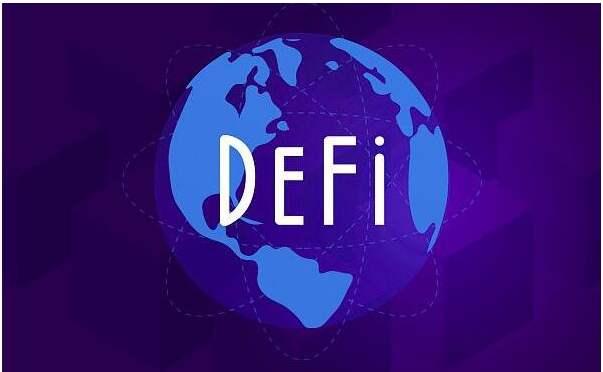Multicoin Founder: An Overview of the Current Development and Opportunities in the DeFi Interest Rate Market
Original Title: 《Exploring the Opportunity for DeFi Interest Rate Markets》
Original Author: TUSHAR JAIN, Founder of Multicoin
Translation: Muse Museum
Interest rates are a key indicator for the construction and valuation of any financial asset. Every equation in finance contains interest rates, and mortgages, student loans, commercial loans, government borrowing, and even stocks and commodities are all affected by interest rates.
Businesses can hedge against interest rate risk by borrowing at fixed rates. Fixed-rate borrowing is the most common form of borrowing in traditional markets. According to Notional's white paper, "In 2018, there was $15.3 trillion in outstanding debt in the U.S. corporate bond and mortgage market, with 88% of that debt being fixed rate."
However, fixed-rate borrowers may be dissatisfied with their loan terms (believing that rates will decline as the economy develops), and they may want to exchange their risk exposure with other borrowers who currently pay variable rates but want fixed rates. Meanwhile, lenders holding fixed-rate bonds may believe that interest rates across the economy will rise and wish to hedge against that risk.
Currently, the DeFi market is primarily limited to floating-rate lending. The two largest lending protocols, Compound and Aave, both support variable rates. While these products work well for users aiming for substantial returns, they are not suitable for companies or new banks that require predictability. As DeFi serves more scenarios, the ability to lock in interest rates will become a key technology.
Interest rate swaps (also known as interest rate derivatives) are the most popular form of interest rate derivatives. The daily trading volume of interest rate swaps is $6.5 trillion, accounting for over 80% of the total global derivatives trading volume. Interest rate swaps serve multiple use cases:
(1) Borrowers use interest rate swaps to lock in rates;
(2) Speculators can profit from interest rate swaps;
(3) Portfolio managers and lenders use interest rate swaps to manage risk.
Many teams are currently building fixed-rate lending products and interest rate derivative protocols in DeFi, and in this article, we will explore these protocols in depth.
Opportunities in Interest Rate Markets in Cryptocurrency
Currently, the vast majority of loans in DeFi are floating rates. Among the three major lending protocols, there is $19 billion in outstanding loans: Aave - $7.9 billion, Compound - $4.9 billion, MakerDAO - $6.3 billion.

The image shows that all loans in Compound and MakerDAO are variable rates. As of July 2021, only about 1.5% of outstanding loans in Aave's five largest markets (DAI, GUSD, SUSD, TUSD, and USDC) are "stable rate loans."
Currently, there are some DeFi-native fixed-rate platforms launched, such as YieldProtocol and NotionalFinance. Notional has a TVL of $12 million, and Yield is currently building V2. Therefore, it is clear that the floating-rate loan market in DeFi is much more mature than the fixed-rate loan market. However, we expect fixed-rate loans to surpass floating-rate loans as DeFi ultimately powers traditional financial markets.
We have spoken with many institutional funds and new banks exploring DeFi, and one of the main concerns we heard from them is the significant volatility in interest rates in the lending market.
Thus, even if they are satisfied with the custody and regulatory risks, the lending market does not provide them with maximum utility.
 The above image is a sample of some of the most liquid USDC lending rates in DeFi over the past few years:
The above image is a sample of some of the most liquid USDC lending rates in DeFi over the past few years:
To enable large traditional companies to borrow in DeFi, interest rates need to be more predictable and stable. A company borrowing $100 million on-chain at a 2% interest rate cannot accept a situation where rates soar to 20% a week later. Companies want either fixed-rate loans for a fixed term or access to hedge against variable rate exposure from Compound and Aave.
With the growth of cryptocurrency, we also expect the lending market for on-chain DAOs to grow significantly. As businesses mature, debt financing will become a primary source of funding, and DAOs are no exception.
We predict that many DAOs, such as those managing risks in large DeFi protocols and NFT platforms, will seek debt financing. Imagine a future world where SushiSwap DAO borrows from a variable rate loan protocol and writes a contract stating, "We will use 10% of the income generated from staking xSUSHI to repay the loan," which would expose SushiSwap DAO to the risks of the variable rate protocol, but they could use interest rate swaps to hedge it.
With the launch of new products, fixed-rate loans and interest rate derivative protocols will become very popular.
Overview of Fixed-Rate Loans and Interest Rate Derivative Protocols
There are a few DeFi products that can generate fixed-rate loans and interest rate derivatives, each with its advantages and disadvantages.
Zero-Coupon Bonds (ZCB)
In this model, borrowers create bond tokens (e.g., yDAI-2021-12-31) by depositing collateral into a smart contract and borrowing yDAI. Then, at the settlement date, they sell yDAI on the open market. The actual interest rate paid by the borrower is determined by the discount at which the yToken is sold on the open market and the loan term. For example, Alice can mint 100 yDAI backed by $200 worth of ETH and then sell 100 yDAI to Bob in exchange for 97 DAI. Thus, Bob lends $97 and receives $100 at the contract's maturity.
This method can be implemented in various ways, such as:
1) Trading bond tokens primarily on AMM or CLOB
2) Physical versus cash settlement
3) Liquidation management.
Currently, Hifi, UMA, Notional, and Yield Protocol are using the zero-coupon bond model.
Advantages: 1. Simple structure; 2. Supports fixed-rate lending; 3. Over-collateralization increases lender security; 4. Can build yield curves on top of the protocol; 5. Clearly captures the native token value by supporting liquidation risks.
Disadvantages: 1. Liquidity is fragmented at maturity; 2. Collateral/debt ratios require oracles; 3. Requires depositing collateral into a new smart contract system; 4. Capital efficiency is low for speculators and liquidity providers; 5. Liquidation risks.
Yield Stripping
In this model, users can deposit currency market tokens (e.g., cUSDC from Compound) into the Yield Stripping smart contract. The protocol then splits the deposited cUSDC into two tokens, one being the principal token (PT) and the other being the yield token (YT).
Depositors can pre-sell YT for cash, allowing them to lock in a fixed rate for the contract term. For example, suppose the current loan rate on Compound is 10%. If Alice deposits $100, her annual yield—if the compounding rate remains unchanged over the next 12 months—will be $10. She can trade this unpredictable $10 YT for $8 cash today.
Swivel, Pendle, Tempus, Element, Sense, and APWine are using the Yield Stripping model.
Advantages: 1. Enables fixed-rate lending; 2. Allows leveraged long speculation on interest rates; 3. No need for liquidation or oracles due to pre-deposited principal and implied leverage; 4. Enhances capital efficiency for speculators; 5. Safer than ZCB as collateral is included in Compound, Aave, etc.; 6. The market capitalization and liquidity of AAVE and COMP (which support protocol risks) have reached levels that new protocols find difficult to replicate.
Disadvantages: 1. Does not allow for explicit shorting of interest rates; 2. Capital efficiency for interest rate trading is somewhat low due to the need to prepay the entire principal; 3. Limited to principal assets and interest rates (no external interest rate risks); 4. Due to the spread between borrowing rates in Compound and Aave, perfect hedging on the floating side is not allowed.
Stable Rate
Aave has integrated its stable loan feature with the protocol's variable rates. The basic idea is that when a borrower opens a new loan, they have the opportunity to choose a "stable rate." Their starting rate will be higher (often much higher) than the variable rate available.
For example, the floating borrowing rate for USDC is 5.4%, while the stable borrowing rate is 11.9%. The variable borrowing rate for ETH is 0.25%, while the stable borrowing rate is 3.3%. This buffer ensures that the protocol remains solvent before a "rebalancing event" (i.e., a change in the stable rate for existing borrowers).
Unlike variable borrowing rates, the borrowing rate for stable borrowers does not fluctuate with new loans, new deposits, or new liquidations entering the Aave market under most market conditions.
Currently, AAVE is using this model.
Advantages: 1. A trusted protocol in the Ethereum ecosystem, AAVE has a large market capitalization and sufficient liquidity to support the scale of the protocol, potentially making it safer than other models; 2. Allows users to borrow at a stable rate (though not guaranteed to be fixed under very special market conditions); 3. Highly utilized in markets with lower market capitalization, low liquidity, and greater price volatility.
Disadvantages: 1. Cannot explicitly speculate on interest rates; 2. Applicable only to borrowers, not lenders; 3. Under adverse market conditions, users' rates may "rebalance"; 4. Stable borrowing rates are significantly higher than floating rates.
Contracts for Difference (CFD) and Interest Rate Perpetual Contracts
In this model, users deposit any form of collateral into a margin account and choose to go long or short on interest rates. This structure resembles perpetual contracts on FTX and BitMEX. Funds are paid based on the underlying reference interest rate indicated by the contract and the current marked interest rate on the protocol.
These products offer leverage, thus requiring a liquidation engine. If a trader's account margin falls below their maintenance margin, the system will liquidate against the perpetual contract AMM (or CLOB).
Currently, Strips Finance and YieldSwap are using this model.
Advantages: 1. Allows for explicit shorting of interest rates; 2. Able to access off-chain derived synthetic rates (e.g., LIBOR or FTX's BTC perp funding rate); 3. High capital efficiency as it does not require pre-providing principal tokens and allows for bilateral leverage; 4. Due to the perpetual nature of the contracts, liquidity is concentrated.
Disadvantages: 1. Requires an off-chain interest rate oracle; 2. Due to leverage, liquidation is necessary; 3. Requires separate perpetual bond contracts for Compound/Aave borrowing rates to create perfect hedges.
DeFi Interest Rate Perpetual Contracts
The flexibility of the synthetic nature of perpetual contracts allows speculators and hedgers to trade at any theoretical interest rate (e.g., USDC compound loan rate, LIBOR rate, federal funds rate, FTX funding rate, ETH staking yield). Notably, these contracts are essentially perpetual and do not expire.
Thus, there is no liquidity fragmentation across periods. Speculators drive liquidity of funds, benefiting hedgers and other users with real demand.
Imagine Alice borrowing XYZ tokens from Aave for her trading strategy. She can hedge against rising borrowing rates that erode her trading strategy's profitability by going long on the Aave rate for XYZ tokens through an interest rate perpetual contract.
Perpetual contracts are not perfect, but they provide a capital-efficient way for market participants to bet on interest rates.
In our previous article on DeFi derivative design, we concluded that perpetual contracts are likely to be the winning formula for DeFi derivatives. We believe this may also hold true for interest rate swaps. While perpetual contracts are not perfect, their weaknesses are manageable.
While the stable rate model is safe for lenders as capital is held within Aave, it does not allow for bilateral leveraged exposure to interest rates, which reduces its utility. ZCB can achieve fully predictable fixed-rate lending but cannot facilitate speculation on capital utilization rates, resulting in lower liquidity.
Although the construction of interest rate perpetual contracts in DeFi has not yet reached meaningful scale, we see tremendous opportunities. We expect perpetual contracts to already be a major trading product in cryptocurrency and will also apply to CeFi and DeFi interest rates.











